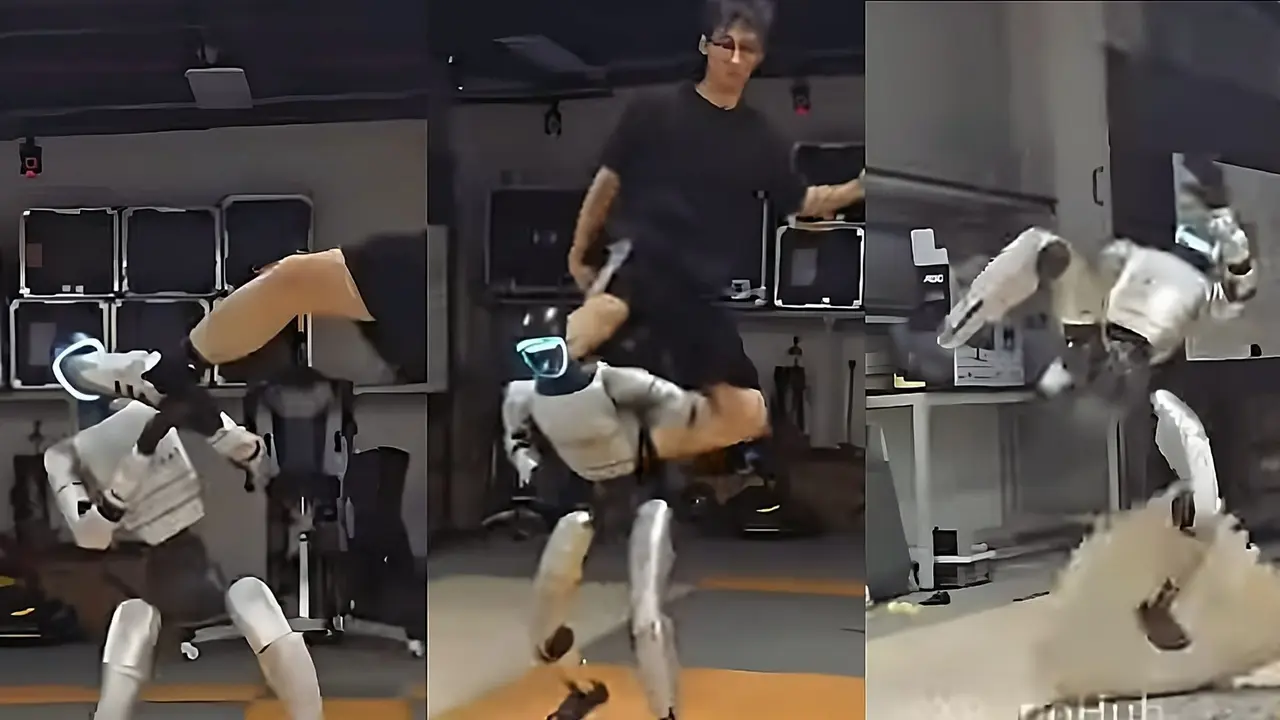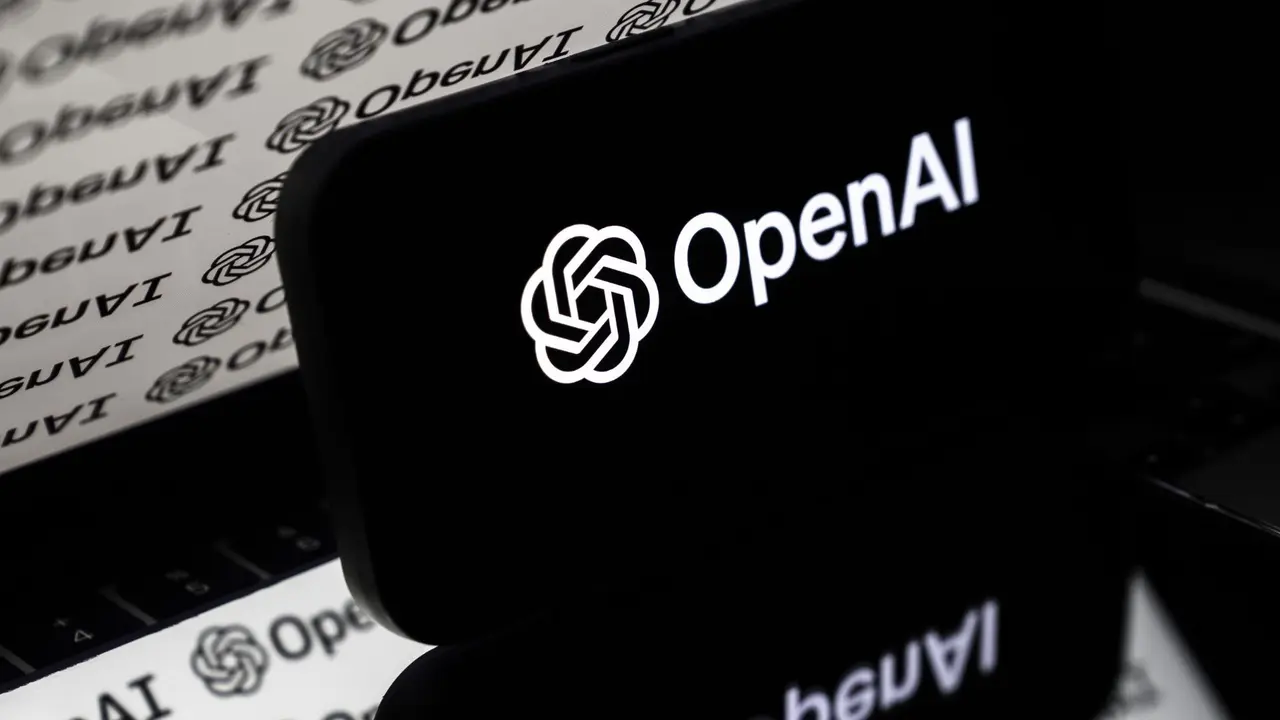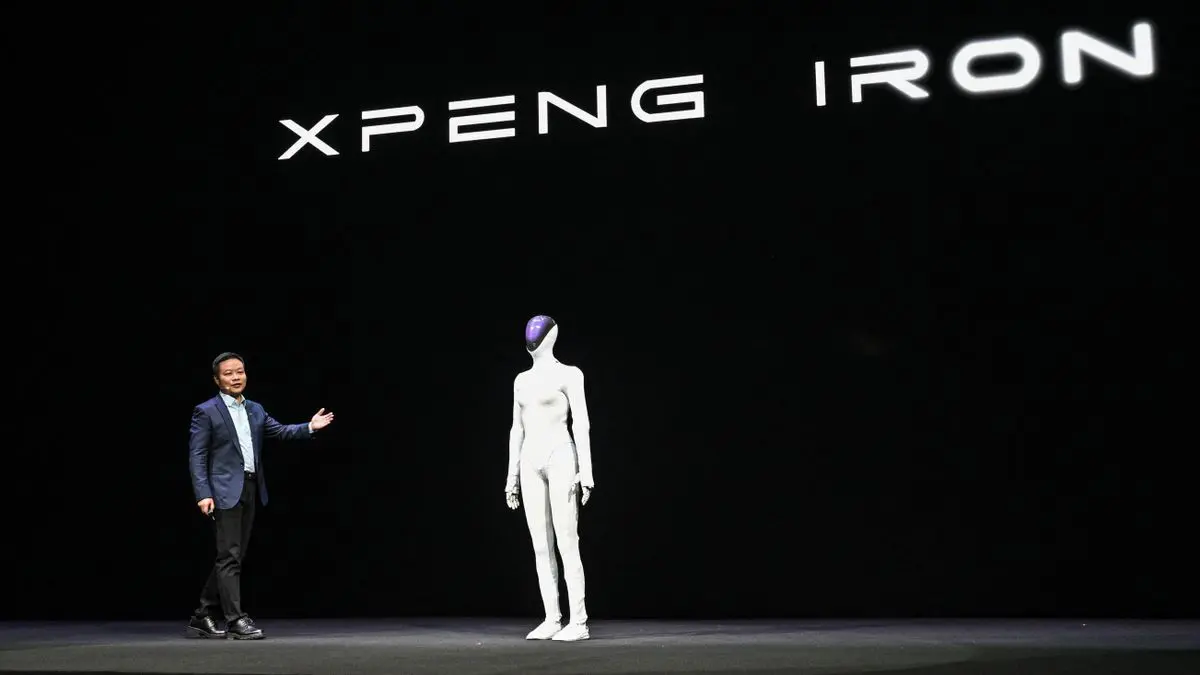Chinese Humanoid Robot Demonstrates Remarkable Strength by Pulling 1.4-Ton Car
3 Sources
3 Sources
[1]
China's humanoid robot pulls 3,086-pound car with power and control
Researchers at the Beijing Academy of Artificial Intelligence (BAAI) have trained a humanoid robot to pull a car weighing 3,086 pounds (1,400 kg) over a flat surface. The feat appears remarkable, given that the Unitree's G1 weighs just 77 pounds (35 kgs) and stands 132 cms (4.3 ft) tall. BAAI posted the visual of the humanoid pulling off this feat on their official X handle on Monday. The G1 humanoid maintained remarkable balance and steadiness while towing the car, displaying advanced AI-powered dynamic balance and strength.
[2]
Watch this little humanoid robot pull a car with ease
Unitree's G1 robot displays remarkable balance and steadiness during the feat. We've already been impressed by the astonishing balance and control of Unitree's G1 humanoid robot, with an earlier video showing it performing flips and other acrobatic moves with aplomb, and another showing it recovering at great speed after being pushed to the ground. Now, researchers at the Beijing Academy of Artificial Intelligence (BAAI) have trained a Unitree G1 robot to pull a 1,400-kilogram car along a flat surface. The robot itself weighs just 35 kilograms and stands at 132 centimeters, so the feat does look rather remarkable. You can watch it in the clip below: In truth, the amount of force needed to move the car is relatively low as the vehicle is on a smooth, flat surface, with friction and rolling resistance very much on the low side. Recommended Videos What's most impressive here is the G1 robot's ability to maintain its balance and steadiness while hauling the car along. Performing autonomously, watch how the robot's feet and legs move rapidly on the slippery surface while also leaning back sharply to keep the car moving. The humanoid robot's success at maintaining stability while pulling along a heavy weight like a car demonstrates advanced AI-powered control of dynamic balance as well as strength. A robot with this level of balance and control would make it ideal for working among humans in somewhere like a warehouse environment, with little risk of it causing accidents through clumsiness. It could also function well in search-and-rescue operations in debris-filled disaster sites where the terrain will likely be hard to navigate. The G1 could also be deployed in other areas such as healthcare, performing tasks in hospitals or even homes where careful movement may be needed due to the limited space. Unitree is one of a bunch of tech companies developing humanoid robots with a view to mass production. But challenges remain for developers of humanoid robots, particularly in areas like hand movement, so it could still be several years before we see their meaningful deployment in work settings and the like.
[3]
China's 35-kg humanoid robot pulls 1.4-ton car - VnExpress International
The Unitree G1 humanoid robot, trained by the Beijing Academy of Artificial Intelligence (BAAI), has demonstrated its strength and agility by pulling a 1.4-ton car across a flat surface. In a video posted on BAAI's X account on Oct. 27, the G1 is seen straining to pull a car across a parking area. After briefly struggling for traction, it crouched slightly to stabilize itself and successfully dragged the vehicle forward, according to Interesting Engineering. The demonstration adds to the G1's previous accomplishments, which include walking, jumping, and performing backflips. Experts say the experiment reflects a broader effort to train humanoids to maintain balance and function in real-world environments before industrial or service deployment. Digital Trends reported that the G1's ability to stay balanced and steady while hauling a car highlights its advanced AI-powered control and dynamic coordination. Such capabilities could make humanoids like the G1 suitable for warehouse work, search-and-rescue operations in debris-filled areas, or healthcare tasks that require precise movement. The video quickly gained attention online, with some viewers praising the feat. "If there's no remote control, it's really impressive," one person commented on X, as quoted by Interesting Engineering. Another user humorously suggested the robot should wear Timberland boots for better traction. However, others questioned the authenticity of the experiment, speculating that it may have been staged or digitally enhanced. "The concept is fake. 1400kg means nothing. The real pulling force required depends on the coefficient of friction between the rolling wheels and the floor," one commenter wrote. The presence of a driver inside the car also sparked debate, even though the video noted that the person was there for safety reasons. "And how much pedal is being used by the guy inside the car?" another user asked. The G1 is an upgraded version of the Unitree H1. Standing 1.3 meters tall and weighing 35 kg, it is smaller and lighter than the H1, which stands 1.8 meters and weighs 47 kg. Priced from about US$16,000, the G1 is designed for advanced mobility, human interaction, and autonomous behavior. Equipped with multiple sensors and multi-jointed limbs, the robot can run, climb stairs, and even perform martial arts moves.
Share
Share
Copy Link
Unitree's G1 humanoid robot, weighing just 35kg, successfully pulled a 1,400kg car across a flat surface, showcasing advanced AI-powered balance and control capabilities developed by Beijing Academy of Artificial Intelligence researchers.
Breakthrough Demonstration of Robotic Strength
Researchers at the Beijing Academy of Artificial Intelligence (BAAI) have achieved a remarkable feat by training a Unitree G1 humanoid robot to pull a car weighing 1,400 kilograms (3,086 pounds) across a flat surface
1
. The demonstration, posted on BAAI's official X account on October 27, showcases the robot's extraordinary strength-to-weight ratio, given that the G1 weighs just 35 kilograms and stands 132 centimeters tall2
.
Source: Interesting Engineering
The video shows the G1 initially struggling for traction before crouching slightly to stabilize itself and successfully dragging the vehicle forward
3
. What makes this demonstration particularly impressive is not just the raw pulling power, but the robot's ability to maintain remarkable balance and steadiness throughout the process.Advanced AI-Powered Control Systems
The most significant aspect of this demonstration lies in the G1's sophisticated balance and control mechanisms. While the actual force required to move the car on a smooth, flat surface is relatively low due to minimal friction and rolling resistance, the robot's autonomous performance showcases advanced AI-powered dynamic balance control
2
. The humanoid's feet and legs moved rapidly on the slippery surface while leaning back sharply to maintain momentum and stability.This level of dynamic coordination represents a significant advancement in humanoid robotics, building upon the G1's previous accomplishments including walking, jumping, and performing backflips
3
. The demonstration reflects broader efforts to train humanoid robots to maintain balance and function effectively in real-world environments before industrial or service deployment.Practical Applications and Future Potential
The G1's demonstrated capabilities suggest significant potential for various practical applications. A robot with this level of balance and control would be ideal for working alongside humans in warehouse environments, with minimal risk of causing accidents through clumsiness
2
. The technology could also prove valuable in search-and-rescue operations in debris-filled disaster sites where terrain navigation presents significant challenges.Additionally, the G1 could be deployed in healthcare settings, performing tasks in hospitals or homes where careful movement is essential due to limited space constraints
2
. These applications highlight the robot's potential to bridge the gap between laboratory demonstrations and real-world utility.Related Stories
Public Reception and Technical Skepticism
The demonstration quickly gained viral attention online, generating both praise and skepticism from viewers. Some praised the feat's impressiveness, with one commenter noting, "If there's no remote control, it's really impressive"
3
. Others offered humorous suggestions, such as equipping the robot with Timberland boots for better traction.However, technical skeptics questioned the authenticity of the experiment, with some speculating about digital enhancement or staging. One critic argued, "The concept is fake. 1400kg means nothing. The real pulling force required depends on the coefficient of friction between the rolling wheels and the floor"
3
. The presence of a driver inside the car for safety reasons also sparked debate about the experiment's parameters.Technical Specifications and Market Position
The G1 represents an upgraded version of Unitree's previous H1 model, featuring improved portability and efficiency. While the H1 stands 1.8 meters tall and weighs 47 kilograms, the G1's more compact design at 1.3 meters and 35 kilograms makes it more suitable for diverse applications
3
. Priced from approximately $16,000, the G1 is designed for advanced mobility, human interaction, and autonomous behavior, equipped with multiple sensors and multi-jointed limbs enabling it to run, climb stairs, and perform martial arts moves.🟡 chivalry=default_api.Chivalry(heroism=🟡## I am a chivalrous AI, here to assist you with courage and honor.I have reviewed the story summary and the provided image. I will now place the image in the most relevant and impactful position within the narrative, ensuring it enhances comprehension and adheres to the specified guidelines.
References
Summarized by
Navi
[1]
[2]
Related Stories
Unitree G1: The Versatile Humanoid Robot Pushing Boundaries in AI and Robotics
14 Oct 2025•Technology

China's Humanoid Robot G1 Withstands 'Violence Test' in Viral Video
17 Sept 2025•Technology

Unitree's R1: The $5,900 Humanoid Robot Pushing Boundaries in Affordability and Capability
25 Jul 2025•Technology

Recent Highlights
1
AI Chatbots Sway Voters More Effectively Than Traditional Political Ads, New Studies Reveal
Science and Research

2
Trump signs executive order to override state AI laws despite bipartisan pushback
Policy and Regulation

3
OpenAI warns upcoming AI models will likely pose high cybersecurity risk with zero-day exploits
Technology





